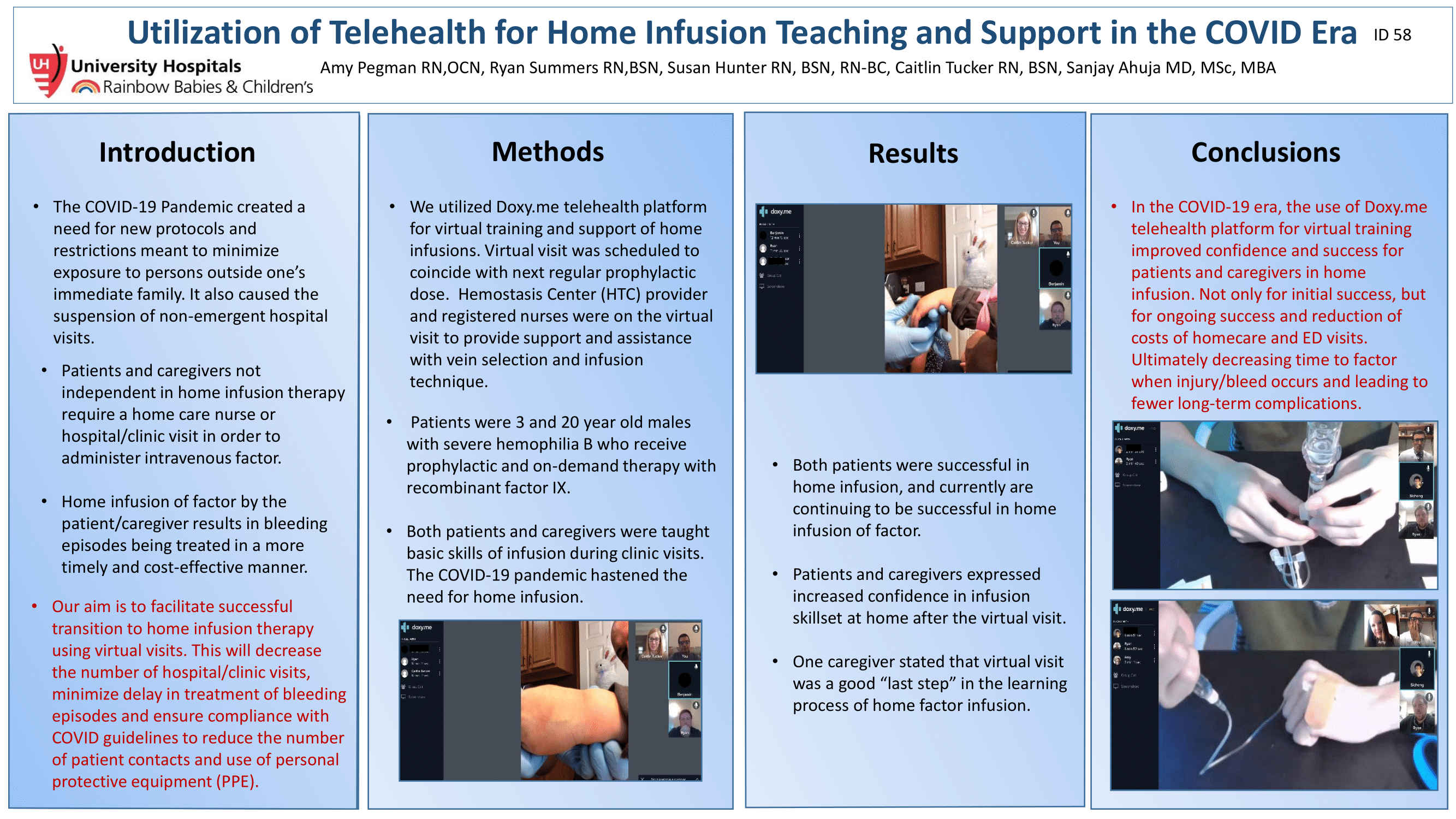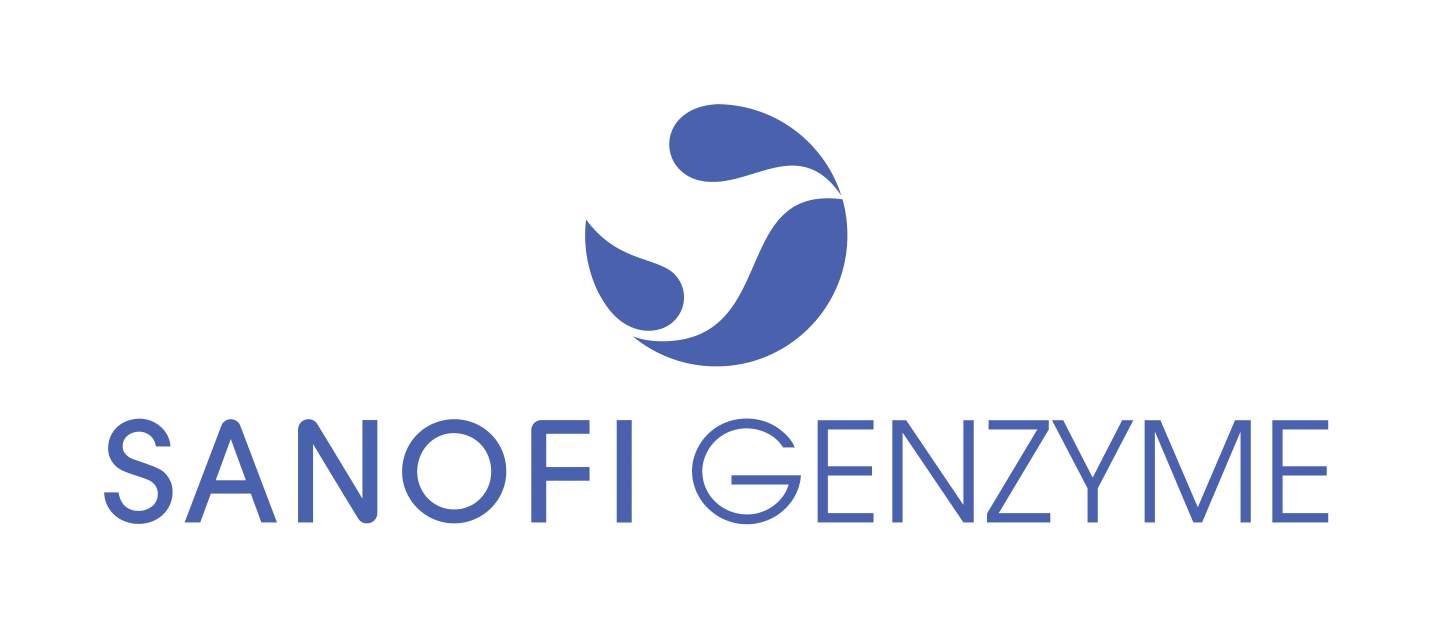National Hemophilia Foundation (NHF) - Posters
Utilization of Telehealth for Home Infusion Teaching and Support in the COVID Era |
|
|
|

|
Utilization of Telehealth for Home Infusion Teaching and Support in the COVID Era
Objective:
To facilitate a successful transition to home infusion therapy using virtual visits. This will decrease the number of emergency department (ED) or clinic visits, minimize delay in treatment of bleeding episodes in patients with hemophilia and facilitate compliance with COVID guidelines to reduce the number of patient contacts and use of personal protective equipment (PPE).
Background:
Patients and caregivers who are not independent in home infusion therapy traditionally require the services of a home care nurse or hospital/clinic visit in order to administer intravenous factor to treat their bleeding disorder. This is of particular concern in light of the current COVID-19 pandemic where contact outside ones immediate family is discouraged, and non-emergent hospital visits are suspended. Infusion of factor at home by the patient/caregiver means that bleeding episodes can be treated in a timely and cost effective manner, resulting in decreased prolonged bleeding and fewer long-term complications. The difference in cost and utilization of resources is substantial. Past studies have shown that an average ED visit costs around two to three thousand dollars. These costs and the need for a home nurse can be avoided when the family is independent with infusion. Delay in treatment of an acute bleeding episode is avoidable when a patient or caregiver is able to infuse factor in the home.
Methods:
We utilized the Doxy.me telehealth platform for virtual training and support of home infusions, using the group call feature of the program. The two patients were 3 and 20 years old males with severe hemophilia B. Both patients and caregivers were introduced to the basic infusion skills during in-person clinic visits. The COVID Era concerns raised the urgency and challenges to institute home therapy. A virtual visit was scheduled which coincided with the timing of the patients regular prophylactic factor dose. Hemostasis Center (HTC) RNs as well as the provider were present on the call to provide support and assistance with vein selection and infusion technique, guiding the patient/caregiver and talking through the process.
Conclusion:
Both patients were successful in home infusion therapy with the virtual support of the HTC staff. This method allowed the HTC staff the unique opportunity to observe and support the family in their home setting while reducing cost. Both patients and caregivers were given a brief survey in follow-up phone calls, and all reported increased confidence with home factor infusion skills. All gave positive feedback regarding the virtual visit method. One parent viewed the virtual visit as a productive last step in the learning process of home factor infusion. Both patients continue to be successful with home factor infusion after the initial virtual visit.



